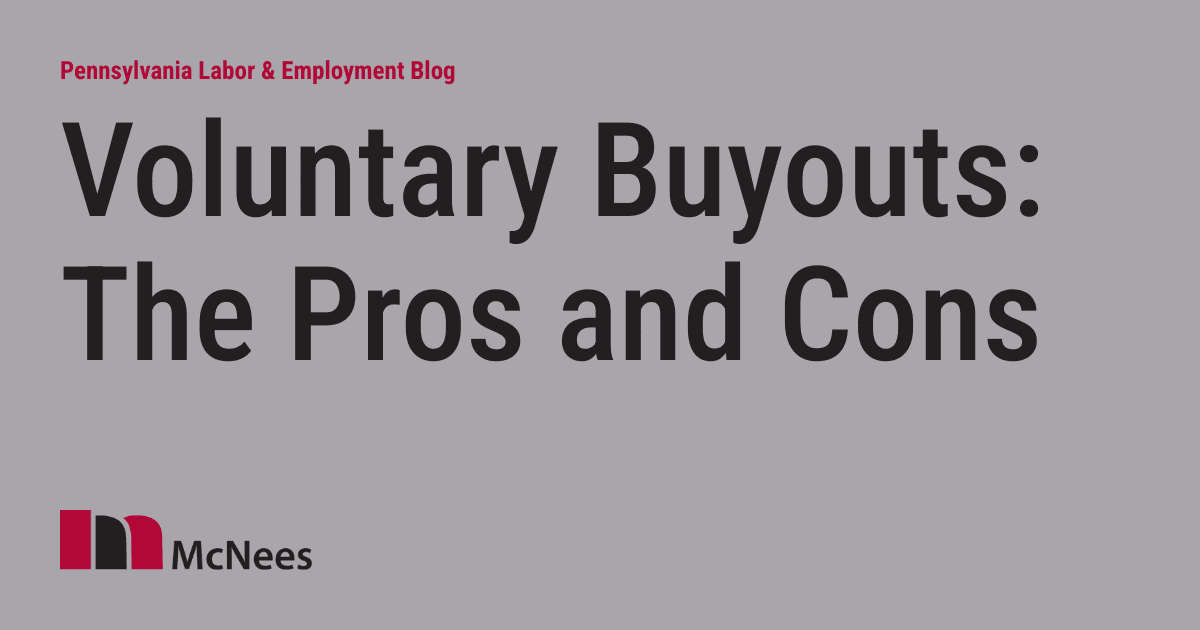
Yesterday, the Trump Administration announced that it offered voluntary buyouts to over two million federal employees. Employees who voluntarily resign their position will receive payments equal to approximately eight months of their salary. Obviously, the goal is to reduce the size of the federal workforce and related expenses.
From time to time, our clients ask us about doing similar voluntary exit incentives to shrink their labor-related expenses. Such voluntary programs often have pros and cons. Some of those tradeoffs look like this:
Pros
- By allowing employees to volunteer to resign or retire, the company can accelerate the departure of employees who are planning to leave anyway or who are on the fence about whether to leave. The buyout may provide them the final nudge they need.
- Employees on the cusp of retirement often elect the voluntary buyouts. Those same employees tend to be the highest compensated employees. By capturing those employees in the voluntary buyout, a company can shed some of its most expensive labor.
- It avoids difficult decisions. If the employee volunteers to leave, the company does not need to make the hard decision about who to keep and who to let go.
- Voluntary buyouts often come with a severance agreement that includes a general release of all claims. The employees elect the voluntary buyout knowing that they will sign a general release to receive the incentive payments. So, the risk of post-termination discrimination lawsuits is significantly diminished.
Cons
- A company-wide buyout offer can lead to critical employees leaving the company. The departure of those key employees can cause serious skill-drain and corresponding loss in productivity/revenue. As a result, the buyout may be entirely counterproductive.
- The company may be left with the worst performing employees. A company’s highest performing (and most marketable) employees are typically confident that they can go back into the marketplace and find new employment. So, they are more inclined to take the buyout. Conversely, poor performing employees (particularly those who have become comfortable due to lack of supervisory oversight), tend not to elect.
- A voluntary buyout is not precise enough. It is rare that the effects of a voluntary buy-out are spread evenly across all departments. A voluntary buy-out risks that the employees who elect to participate are concentrated in a limited number of departments, causing imbalance in the workforce. For example, let’s say a company’s IT department is lean, and because of that leanness the employees are disgruntled. In a buyout, all the IT employees elect, leaving no one in the IT department. At the same time, the marketing department is bloated, and because of the excess headcount work demand is low. In the buyout, none of the marketing employees elect. The end result is that the company loses employees it needs and keeps employees it doesn’t.
- While financial payments are necessary to incentivize anyone to voluntarily resign, the uncertainty surrounding healthcare insurance and related costs often prevents employees from accepting the buyout. Unless there is some continuation of paid healthcare (often through COBRA) for a sufficient period of time to bridge the employee to their next job or to Medicare, the risk is often too great for employees to take the offer. The cost of continued healthcare certainly impacts the cost-benefit analysis for the company.
Upon balancing these pros and cons, companies tend to either skip voluntary buyouts altogether or carefully determine which employees are eligible to participate. It is not uncommon for companies to go through a two-step process: a narrowly defined voluntary buyout program followed by an involuntary reduction to surgically remove the remaining excess.
We will find out sooner rather than later whether some of these concepts will surface with the federal government voluntary buyout program.







